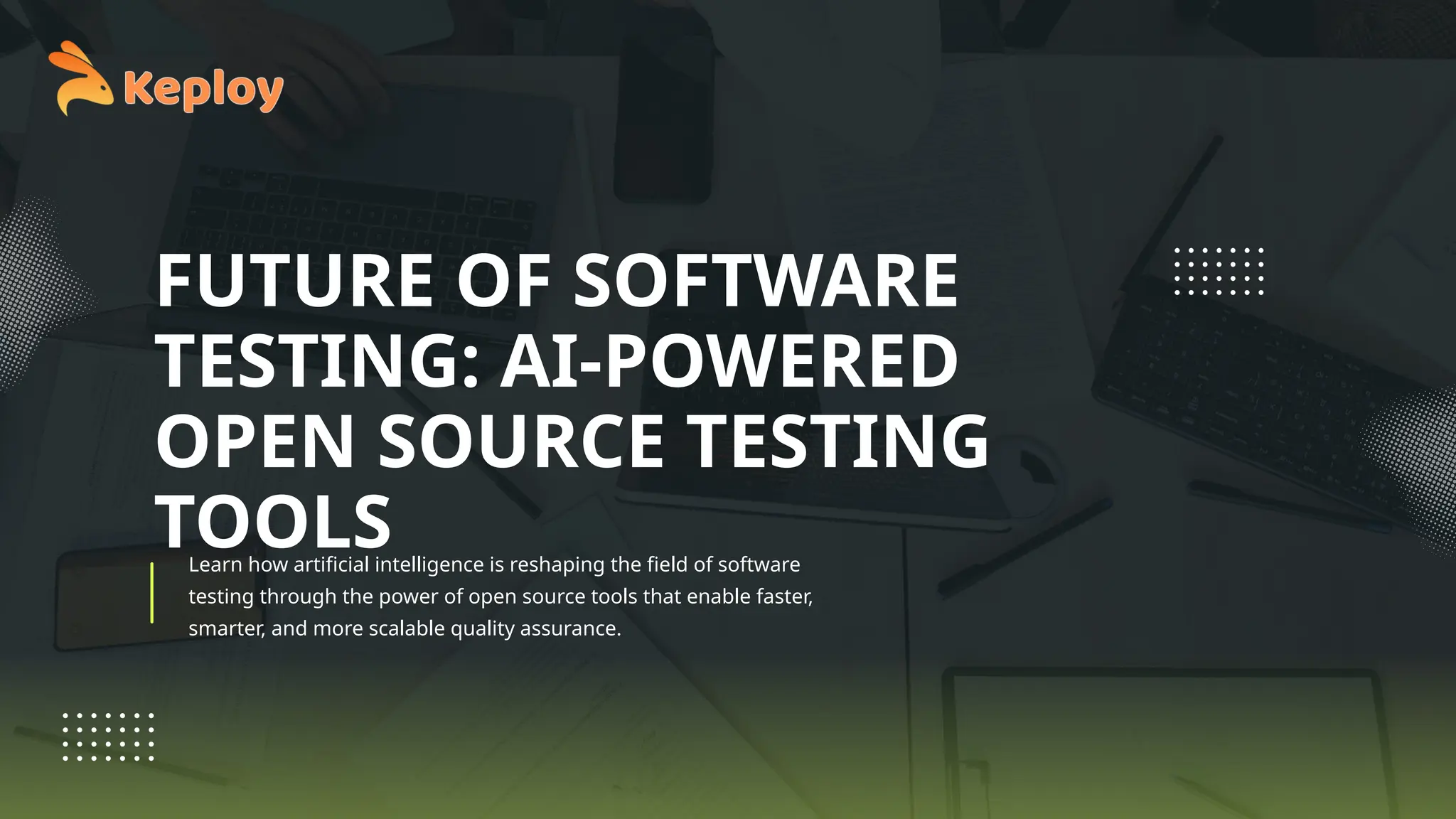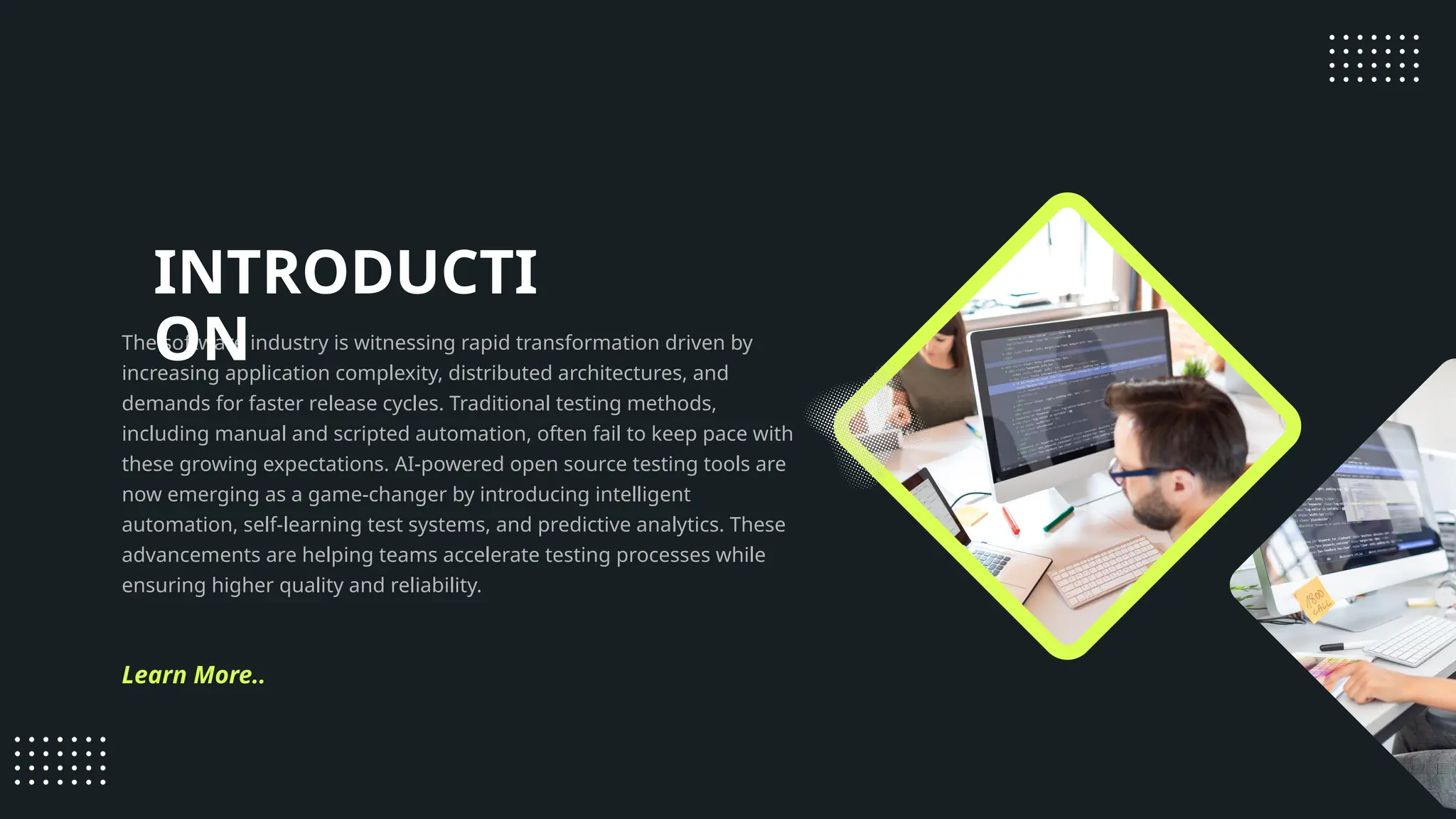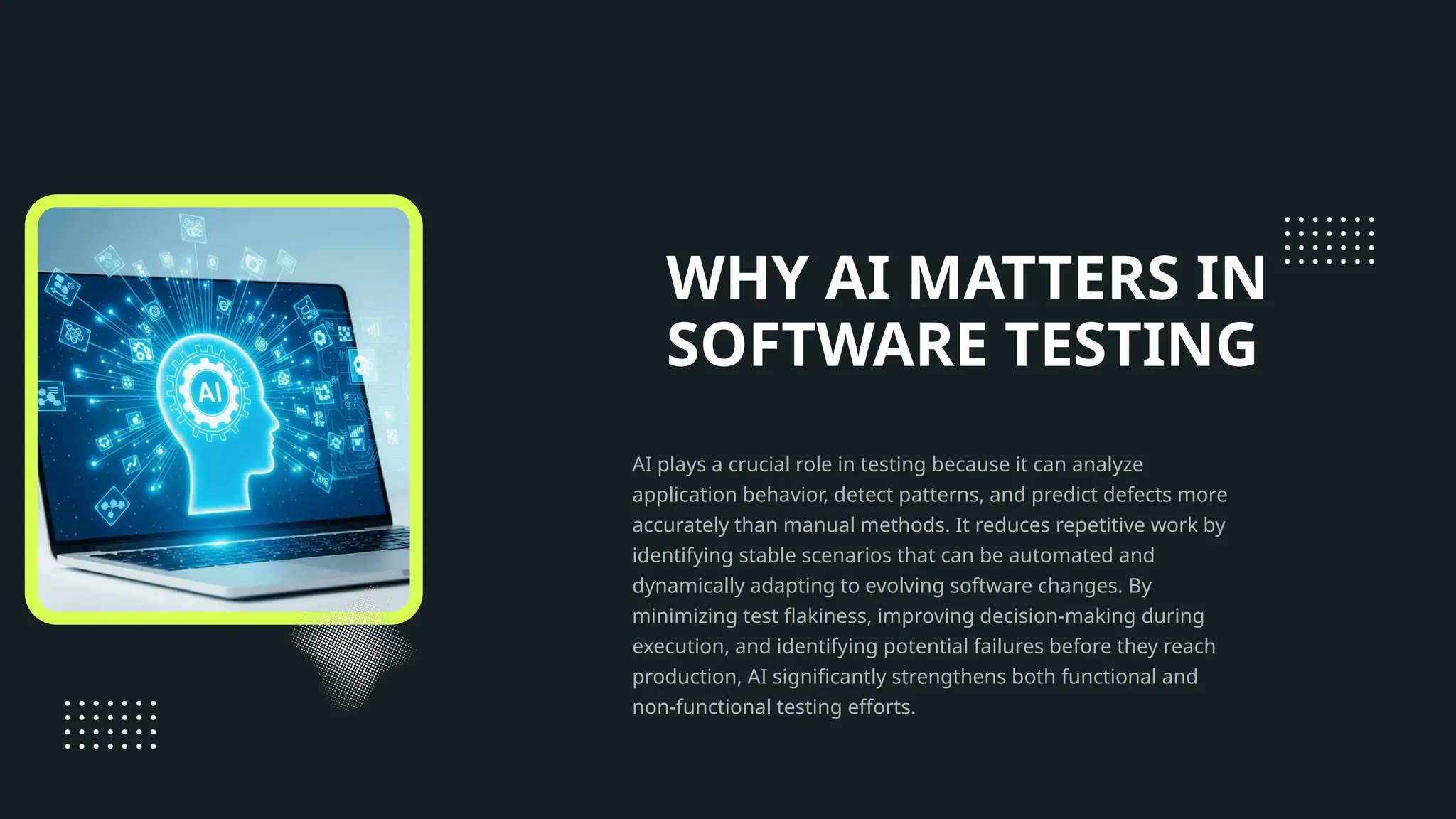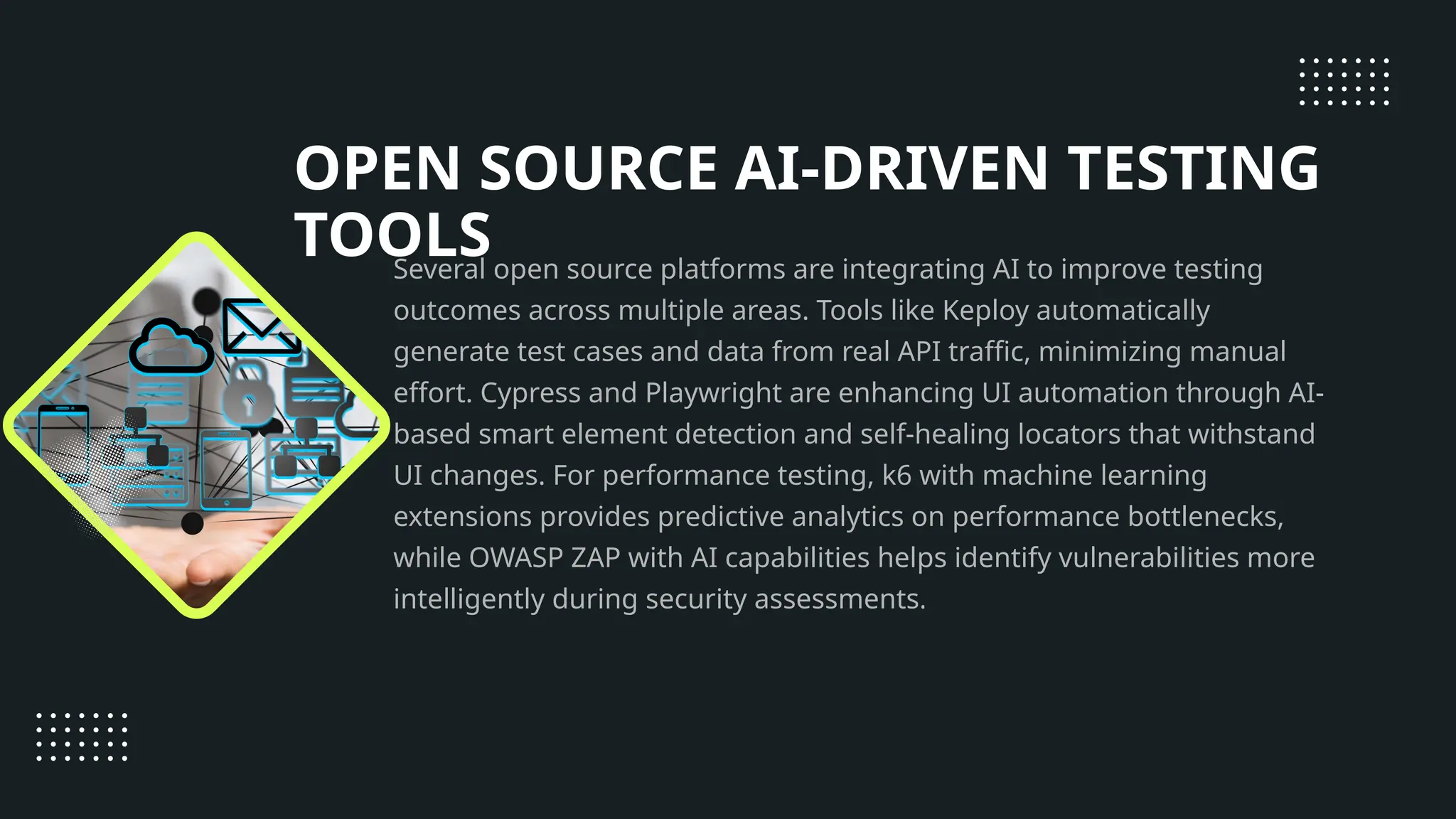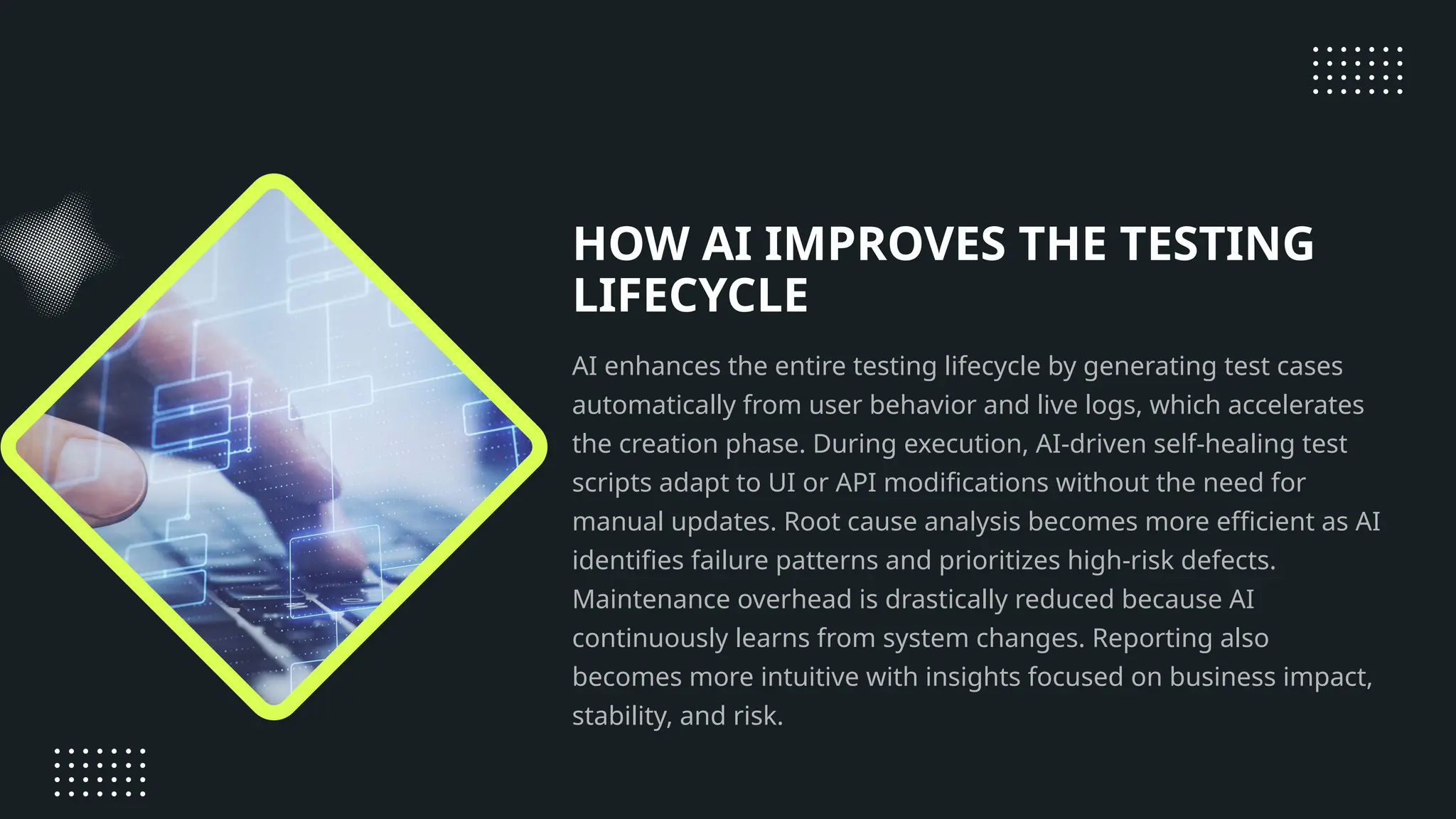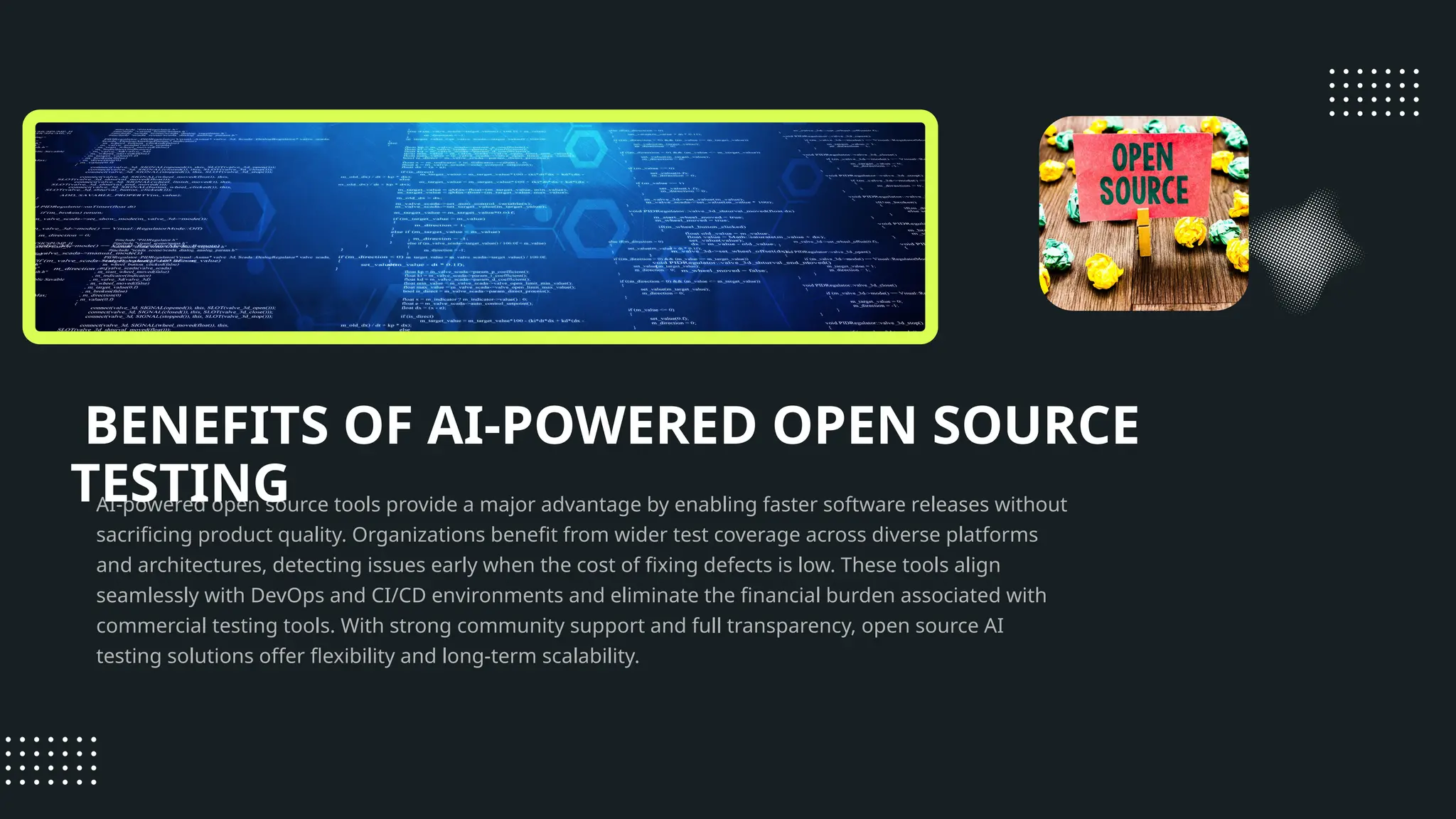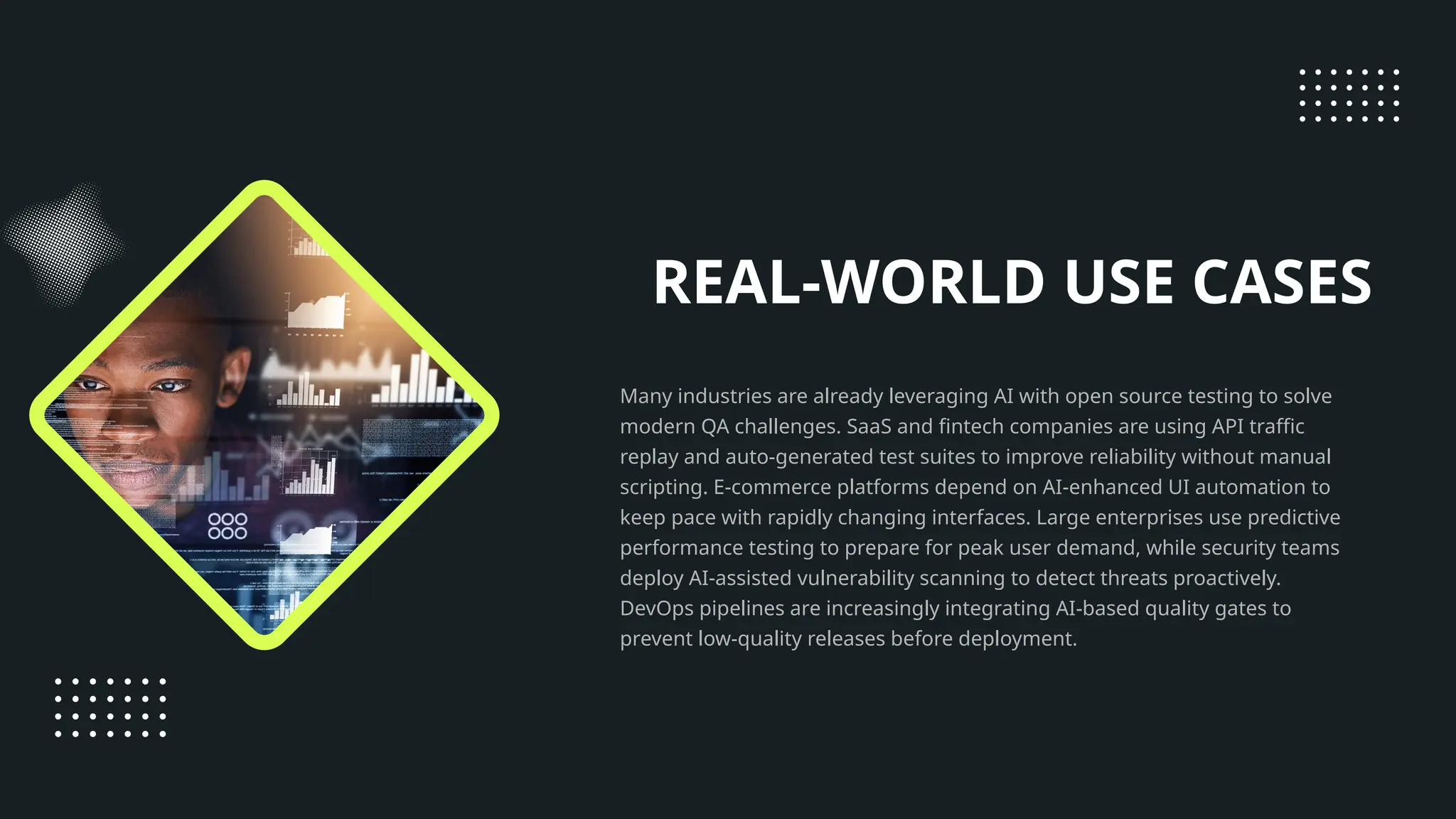This presentation explores how artificial intelligence is redefining the landscape of software testing through the innovation of open source tools. It explains why traditional testing approaches struggle to keep pace with modern development demands and highlights how AI introduces intelligent automation, predictive defect detection, and self-healing test systems. The presentation also examines leading open source AI-driven testing platforms, their real-world applications, and the measurable benefits they bring to DevOps and CI/CD environments. Ultimately, it demonstrates how AI-powered open source testing is shaping a new era of faster, smarter, and more scalable quality assurance for the software industry.
